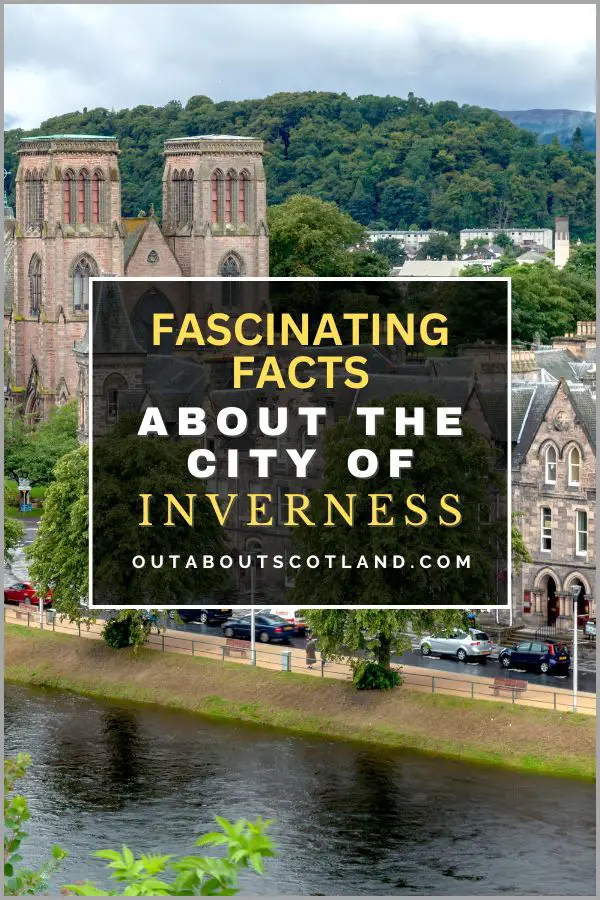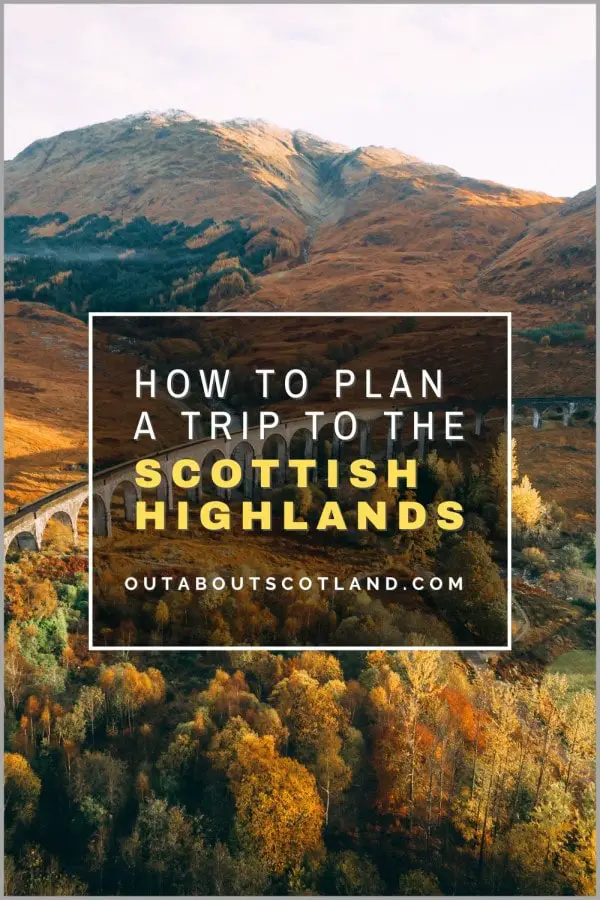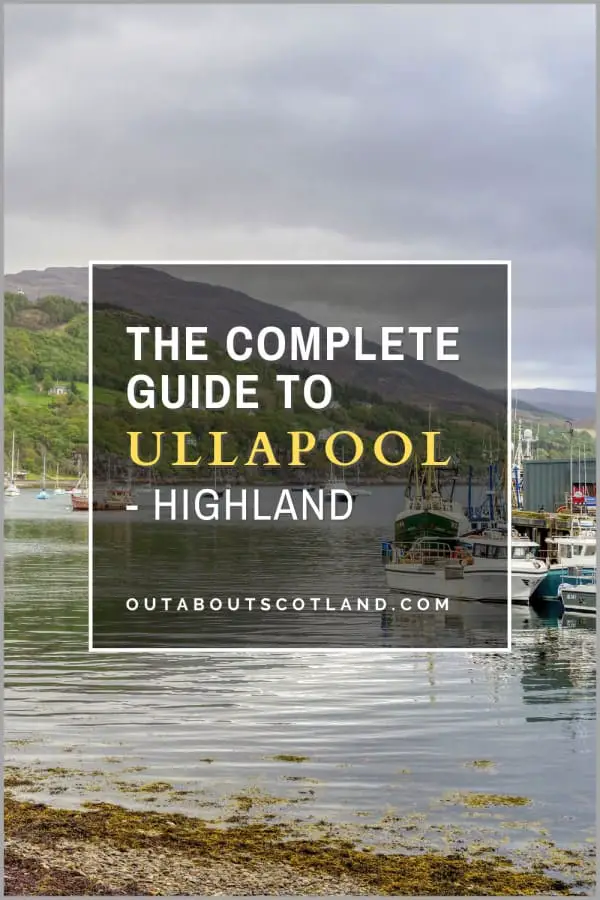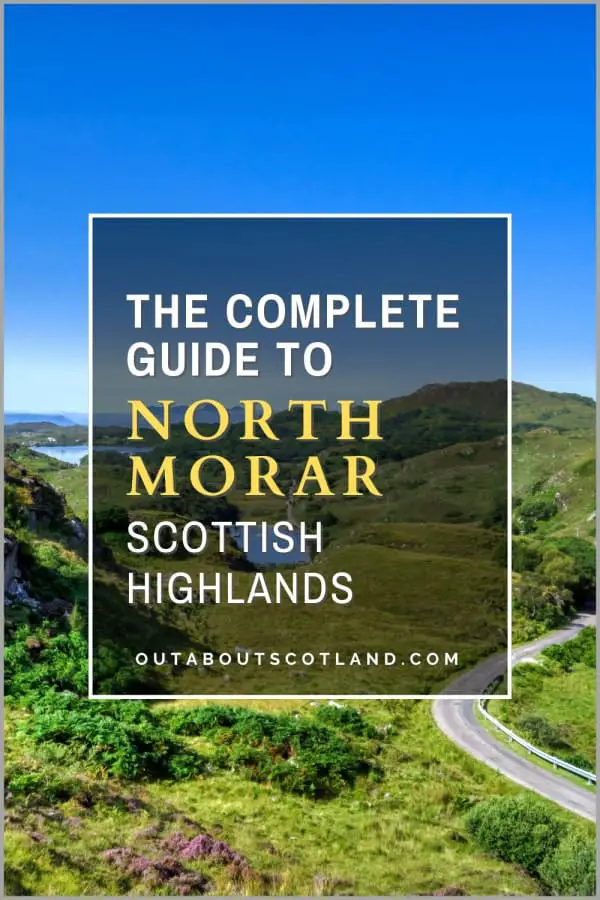The Scottish Highlands are one of the most-visited tourist destinations in Britain, if not Europe. Covering 10,230 square miles, the region is famous for its natural attractions, which include Britain’s highest mountain (Ben Nevis) as well as its largest body of fresh water (Loch Ness). Discover a collection of the top things to do in the Scottish Highlands for couples with this article, which features an overview of each attraction and useful visiting tips.
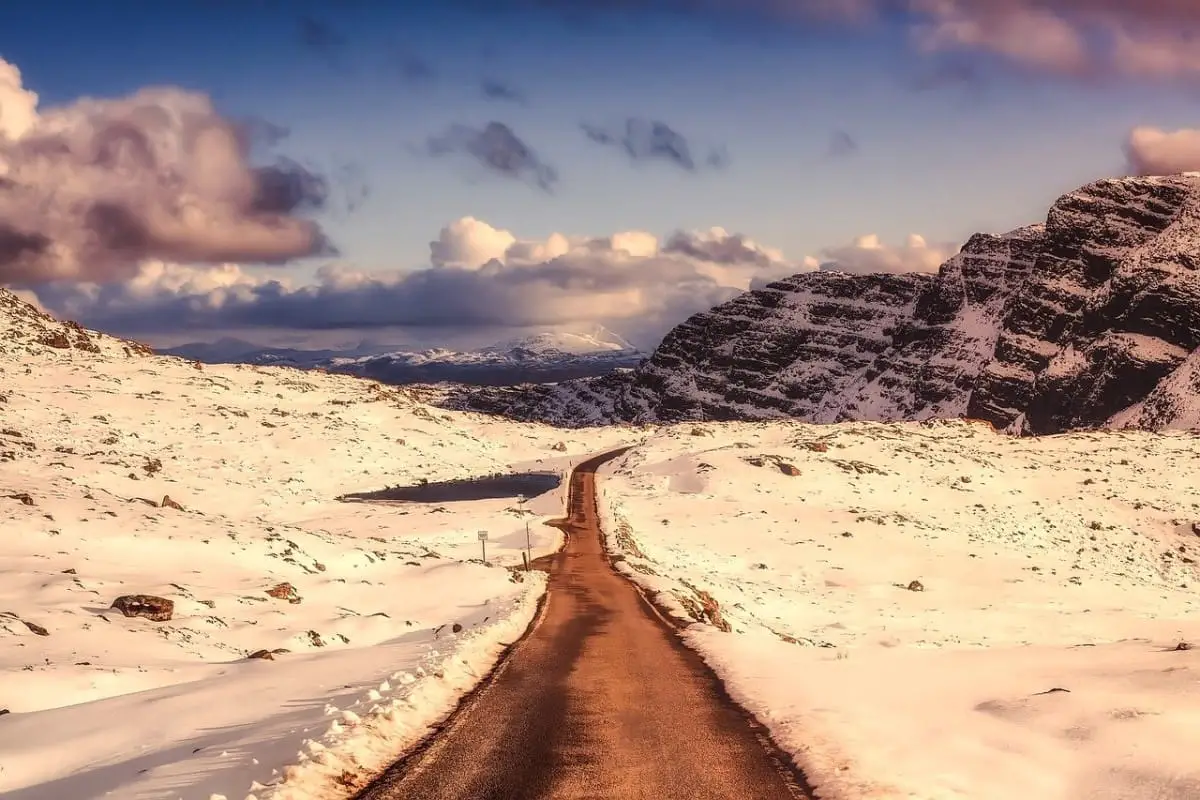
Things to Do in the Scottish Highlands for Couples
The Scottish Highlands have long been a tourist favourite with British holidaymakers and it’s one of the biggest attractions in Europe for travellers who clamour to experience the stunning scenery that’s on offer from Loch Lomond to John O’ Groats. This region comprises one-third of Scotland’s land area and eleven per cent of the total land area in Britain, and the landscape is as diverse as it is vast.
The Highlands are full to the brim with awe-inspiring mountain ranges, serene lochs, and dramatic coastlines, and they’re home to more historic castles, nature reserves, and forests than anywhere else in Britain. Suffice to say, if you visit the Scottish Highlands on holiday you’re not going to struggle to find things to do.
Trying to include every attraction in the Highlands in one article is virtually impossible, so instead, I’ll list a few of my favourites in the list below, along with a selection of 360° photographs that will allow you to look around them in all directions.
Hopefully these photos will inspire you to visit the Highlands yourself, but if you don’t see anything that interests you, please bookmark this page, as I’ll be adding new attractions in the future. Alternatively, check out the Best Highland Attractions page to view a collection of recommended places to visit.
Touring the Scottish Highlands as a Couple
Recent years have seen a rise in the number of retirees, solo travellers, and couples in their middle years who are interested in taking private, small-group tours of Scotland.
The enormous coaches of yesteryear have been replaced with more comfortable and convenient alternatives in the form of compact buses. These smaller buses contain no more than sixteen passengers, which is a big difference when compared to standard-sized coaches that can accommodate as many as fifty people.
There are many options for small group tours of Scotland but in my opinion, Rabbie’s is far and away the best company. This tour operator has been in business since 1993 and specializes in groups that are limited to a maximum of 16 people so you’ll never feel lost in the middle of a crowd.
Since the drivers for Rabbie’s tours are so knowledgeable about Scotland, you can expect to hear some stories that are not only interesting but also hilarious while you travel through the most stunning areas of the country.
To book a sightseeing tour of the Scottish Highlands or to find out more information about the different tours you can take around the Highlands, check out the Rabbie’s website.
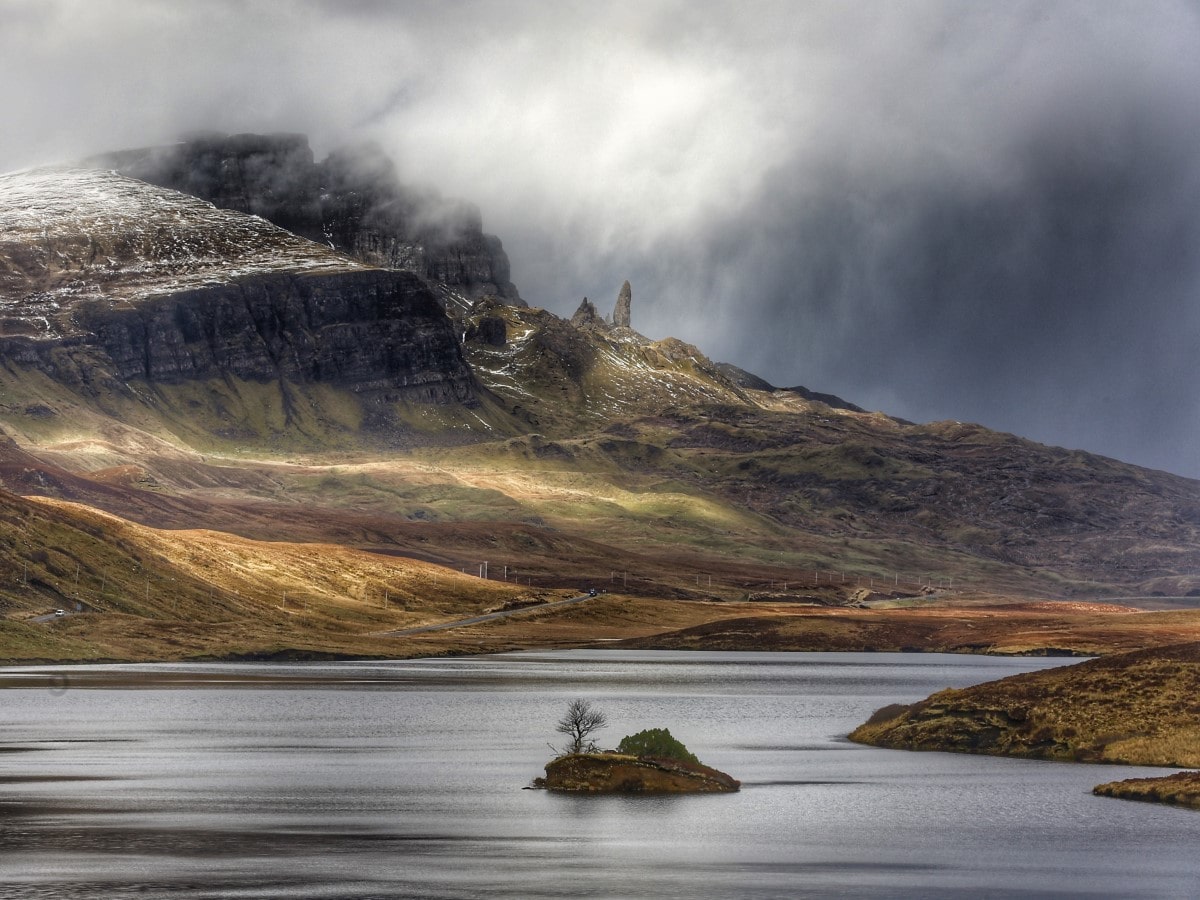
Here’s an example itinerary of what you can expect to see on a Rabbie’s tour:
West Highland Lochs & Castles 1-day Tour
Itinerary:
- Depart Edinburgh and head in the direction of Stirling to arrive at Doune Castle.
- Visit the castle, then continue through Callander to Loch Lubnaig.
- Stop at Loch Lubnaig, then drive to the Braes of Balquhidder.
- Continue to Kilchurn Castle and visit the loch and castle ruins before stopping for lunch.
- Head to Loch Awe and stop at the town of Inveraray near Loch Fyne.
- Explore the old jail in Inveraray and Inveraray Castle before continuing through the Arrochar Alps. Stop along the way for photos.
- Drive along Loch Long towards Loch Lomond. Stop at the village of Luss.
- Continue towards Stirling Castle for photos.
- Arrive back in Edinburgh.
Explore small group tours of Scotland with Rabbie’s
Bidean Nam Bian
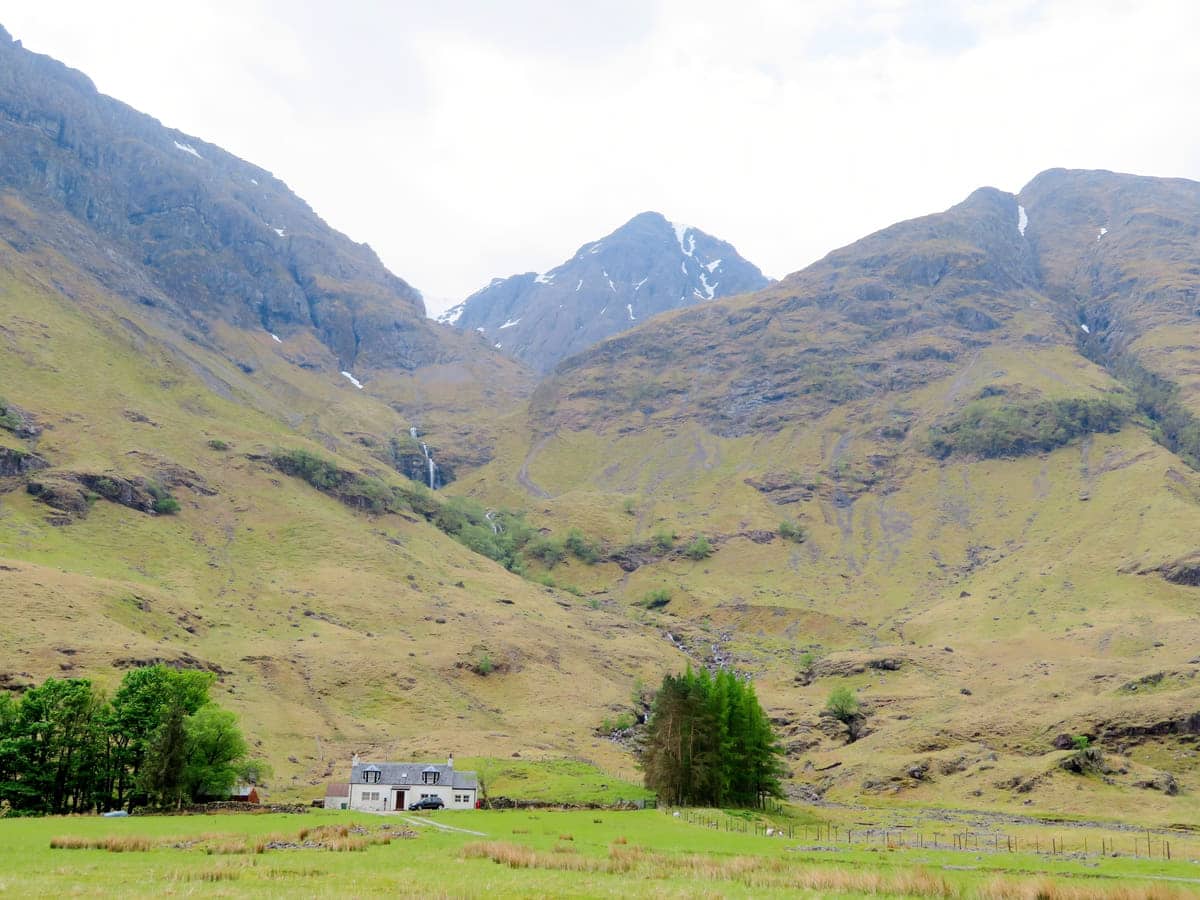
Out About Scotland Complete Guide to Bidean Nam Bian
The Three Sisters of Glencoe are a mountain range in the south of Glencoe in the Scottish Highlands that offers one of the highest-rated Munro climbs in Scotland. If you don’t know what a Munro is, it’s basically any mountain in Scotland that’s over 3,000 feet in height, and climbing one is known as ‘bagging’ it.
Munro bagging is one of our most popular outdoor activities, and each year, tens of thousands of hill walkers make their way to each of the country’s 282 Munros in order to scale them. One of the most popular is Bidean Nam Bian – one of the peaks on the Three Sisters of Glencoe that towers above the impossibly pretty viewpoint of Loch Achtriochtan next to the A82.
Bidean Nam Bian’s popularity is in part due to its location near this road, which makes it supremely easy to get to, with a car park that allows visitors to get close to the foot of the mountain without having to trek to it on a lengthy hike.
There are several routes that Munro baggers can attempt, but the path that threads its way up the mountain slopes from Loch Achtriochtan is the easiest, meaning the majority of people will be able to get at least halfway to enjoy the sweeping vista of Glencoe and the surrounding mountain scenery. Along the route, you’ll pass waterfalls that thunder into crystal-clear pools of water, with several flat sections where you can stop to enjoy those views before continuing the climb.
The lower third of the mountain is really quite easy, but after that, it transitions into a bit of a scramble over rocks and boulders before hitting a fairly steep scree slope two-thirds of the way up, so you’ll need to be reasonably experienced to reach the summit.
Culloden Battlefield

Out About Scotland Complete Guide to Culloden Battlefield
The battle of Culloden was one of the most important events in Scotland’s history, as it was the defining point that ended the Jacobite uprising of 1745.
Prince Charles Edward Stuart, who served as the leader of the Jacobites and brought together many Scottish clans in an effort to reclaim the British throne in the Stuart name,. They were successful in several battles against the British Army and even got as far as Derby in England before retreating back to Scotland and their eventual defeat at Culloden Moor near Inverness.
The National Trust for Scotland currently oversees the battlefield’s maintenance and has installed a network of paths that lead visitors between the lines where the two armies stood during the battle. As it’s partly a graveyard, there are memorial cairns that commemorate each clan that fell, as well as a large cairn that commemorates all the Highlanders that fought for the ‘Bonnie Prince’.
Entry to the battlefield is free, but if you’d like to know more about the history of the Jacobites, there’s an excellent visitor centre nearby that has paid entry. Inside, you can interact with high-tech displays and exhibitions that depict how the Battle of Culloden unfolded, as well as view artefacts that were recovered from the site by archaeologists.
If you’d like to support the National Trust for Scotland and get free entry to all their sites, follow this link to become a member.
Braemar
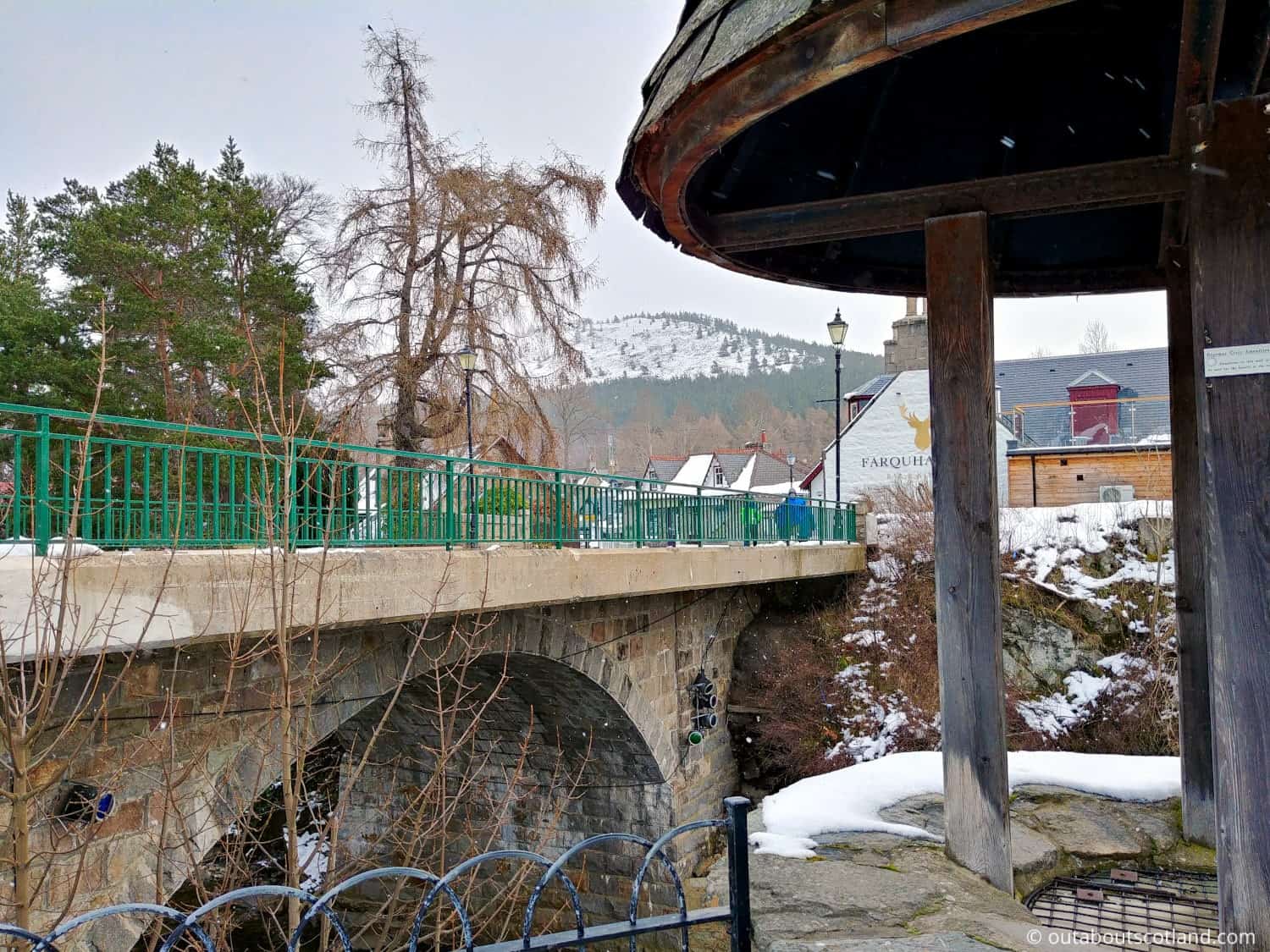
Out About Scotland Complete Guide to Braemar
There are two main reasons why tourists travel to Braemar, a village located in the heart of the Cairngorms National Park. The first is the Braemar Highland Games, which take place on the first Saturday in September and attract members of the royal family every year.
The Braemar Gathering is one of the biggest Highland events of the year, and it’s the best way to experience Scotland’s Highland culture with traditional dancing, massed pipe bands, and sports events including tossing the caber.
The second reason to visit Braemar is to use it as a base to explore the Cairngorms, and there are so many walking and biking trails surrounding it that the village has become the centrepiece of the entire national park. Whether it’s hurtling down muddy tracks on the Glenlivet Estate or going for a walk along the banks of the River Dee, you’re never far from something to do at Braemar.
The hill walks in this part of Scotland are superb, as are the slopes at the Glenshee ski centre, but you’ve also got the option of fly-fishing on the Dee, climbing the mighty Ben Macdui, and exploring the royal estate at Balmoral Castle.
I find myself returning time and time again to Braemar just for the walking routes that are (in my opinion) some of the most scenic in Scotland, so if you visit Braemar yourself, I thoroughly recommend you follow any of the paths that twist their way through the glens of Tilt, Dee, and Feshie.
Just prepare yourself if you’re visiting in winter as Braemar is officially the coldest place in Britain, with temperatures that regularly plummet to -20°C!
Dunstaffnage Castle
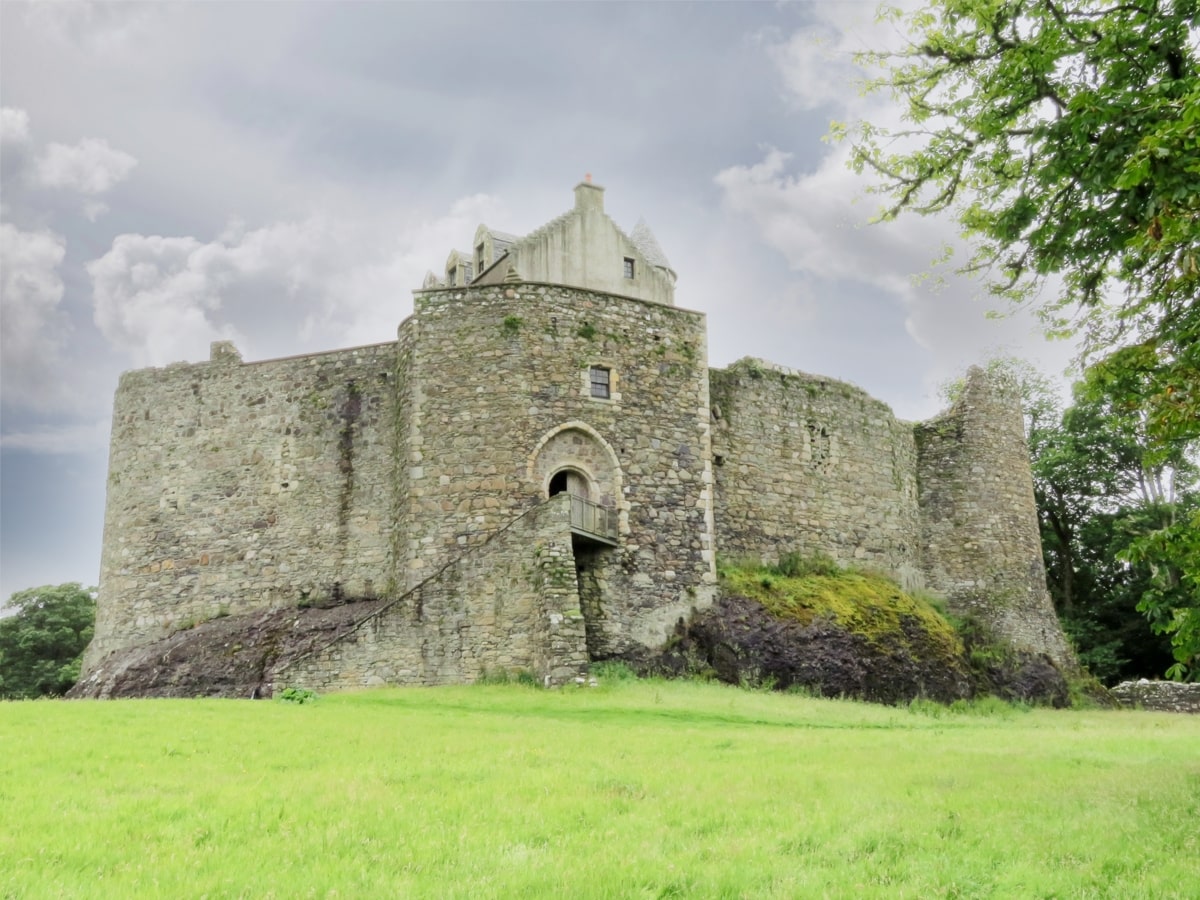
Out About Scotland Complete Guide to Dunstaffnage Castle
There are so many castles in the Scottish Highlands that it’s difficult to know which ones to include in this list, but Dunstaffnage is one of my favourites, and I reckon it’s definitely worth visiting if you’re in the area. You’ll find it just a few miles outside of Oban on the west coast, facing Ardmucknish Bay and the island of Lismore.
Thanks to its proximity to Oban, it makes a great place to stop while waiting for your ferry, but I suggest heading there even if you’re not making your way to Oban.
This castle, which dates back to the 1200s, is one of the oldest in Scotland and is remarkably well-preserved thanks, no doubt, to the enormous, hulking mass of fortified walls that surround the inner residential tower house.
One of the best features of this historic attraction is the walkway that runs along the top of the ramparts, which is unusual for a building of this age to be fully open to the public. From the top, you’re presented with great views of Ardmucknish Bay and the Firth of Lorn, and it’s the best place to appreciate what a superb defensive position it would have been back in the day.
Heading into the tower house, you’ll find three floors that have been partially restored, as well as a cellar and a courtyard. It won’t take you long to explore the castle, but it’s worth taking the time to do so, and you can always extend your visit by walking through the surrounding woodland to search for the hidden Dunstaffnage Chapel.
Fort George
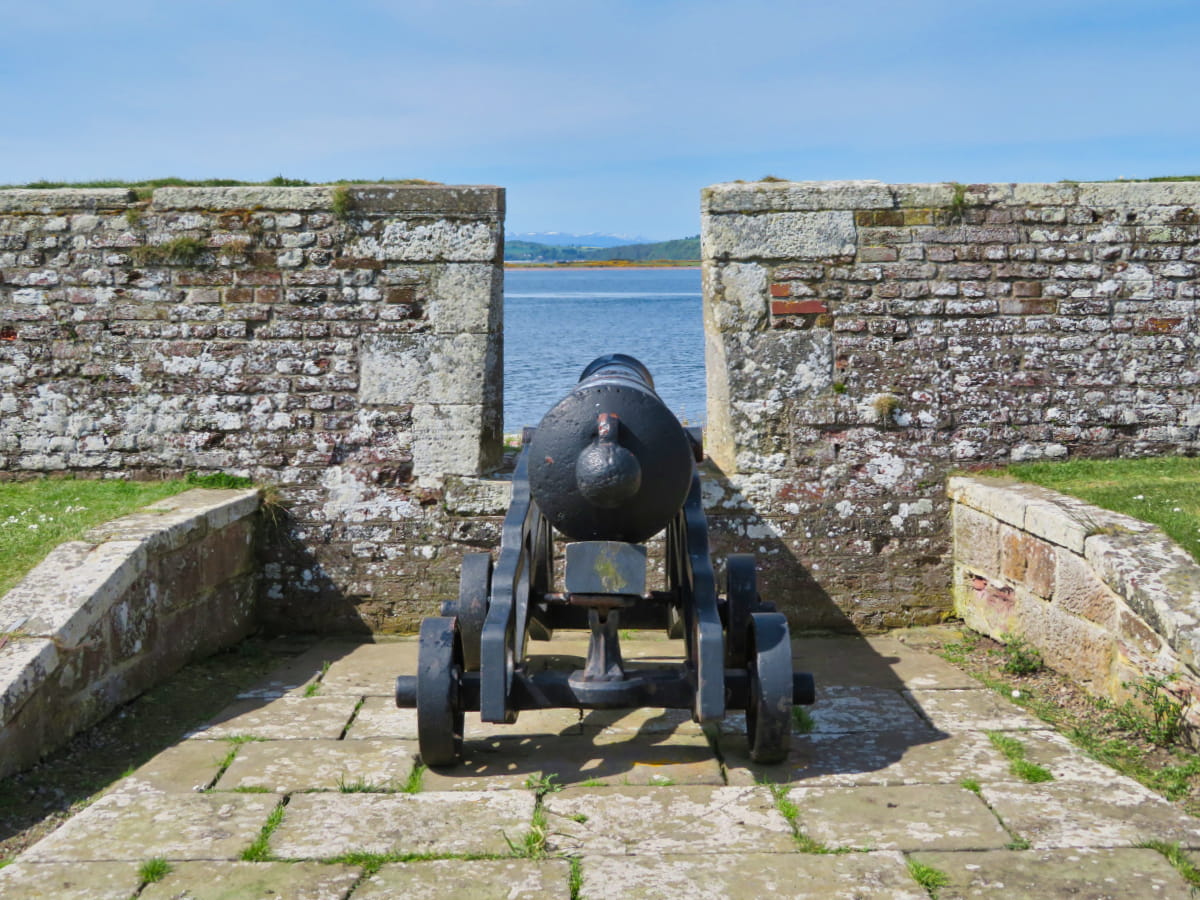
Out About Scotland Complete Guide to Fort George
Fort George is an unusual historic site because it’s still in use today. It was built in 1746 in response to the failed Jacobite uprising and was used as a base for the British Army to counter any further attacks by the Highland clans.
By the time it had been built, the Jacobites were well and truly defeated, but as Fort George offers such a good defensive position on the Moray Firth, the British Army kept the fort open, and they still operate out of it to this day.
There’s a lot to see during a visit to Fort George, and the site is enormous—right up there with Edinburgh and Stirling castles. You’ll get to wander around museums, the regimental chapel, the armoury, and the regimental barrack blocks, but the highlight of the lot has to be the mile-long perimeter wall that circles the entire site.
This huge wall allows visitors to look across the Moray Firth from an elevated position where you’re almost guaranteed to see Scotland’s only permanent resident dolphin pod, which lives around the waters of Chanonry Point.
With that in mind, make sure you take a pair of binoculars with you, as it’s a wonderful experience to watch the dolphins playing in the water. Check out my guide to recommended binoculars to find a good-quality pair for a very reasonable price.
Muir of Dinnet
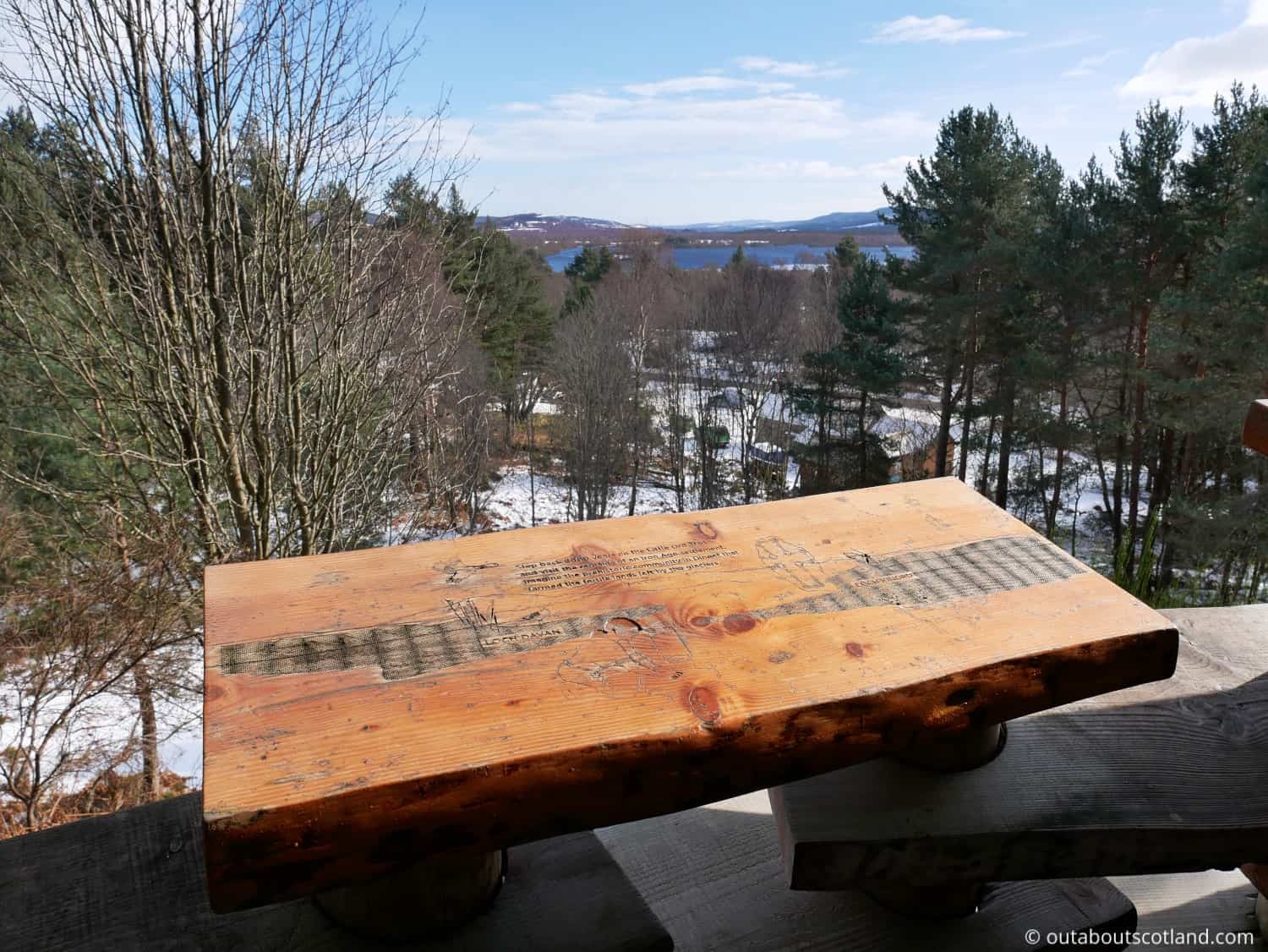
Out About Scotland Complete Guide to Muir of Dinnet
The Cairngorms National Park is one of the most popular tourist destinations in the Scottish Highlands, mainly because the landscapes within it are so diverse. From glass-like lochs to towering mountain ranges, the Cairngorms sum up everything that’s great about the wilds of Scotland.
One hidden gem inside the Cairngorms that you might be unaware of is the Muir of Dinnet nature reserve, located on the eastern edge of the park.
Once inside, you’ll find yourself in a mosaic of moorland, lochs, and some of the thickest pine forests in the nation, all connected by footpaths that weave their way through the reserve’s 1,163 hectares, making it a great, affordable day out for couples.
If you visit the main car park (signposted as you near the reserve), you’ll be able to pop into the visitor centre to discover what you can see on each path, whether it’s shy red squirrels, dancing dragonflies, or hunting osprey. As a place to enjoy nature, the Muir of Dinnet is up there with the best of them, but there are a couple of highlights I recommend visiting first if you’re not sure where to go.
When you arrive, take the 1-mile Burn O’Vat trail, which starts at the main car park and finishes next to a huge cauldron-shaped pothole that was gouged out of the earth during the last ice age. The cavern is a magical place, and it’s quite something to stand inside it and listen to the echoes of the water cascading over the rocks.
The second highlight is Loch Kinord, which is a favourite breeding site for wildfowl, and it’s a must-visit if you enjoy bird watching. The loch is surrounded by a forest that’s framed by mountains, so the path that circles it is arguably one of the most romantic walks in Scotland, especially in the summer when the wildflowers burst into colour.
Kilchurn Castle
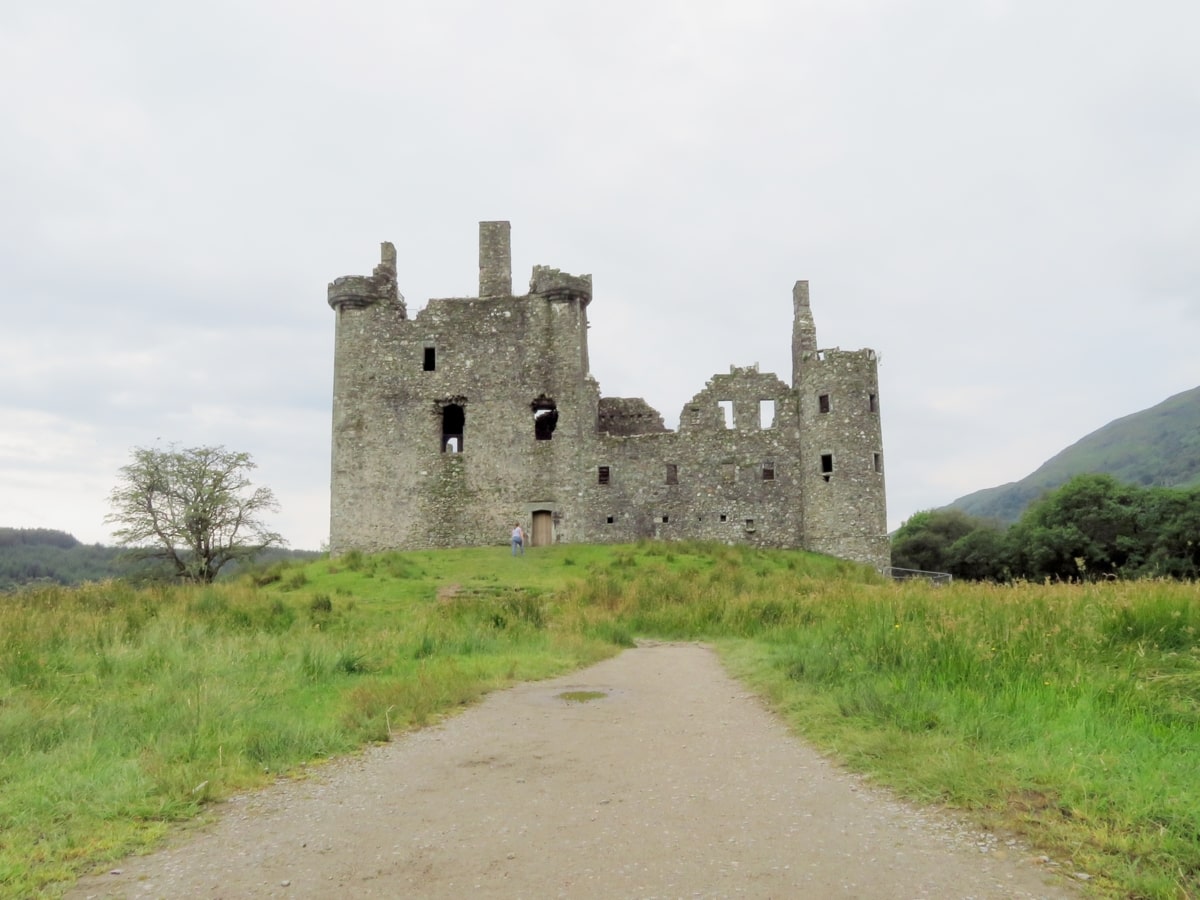
Out About Scotland Complete Guide to Kilchurn Castle
Kilchurn Castle sits at the northernmost point of Loch Awe, a few miles from St. Conan’s Kirk on the A85. This castle is entirely in ruin, but it’s one of the most photographed in Scotland thanks to its stunning setting.
There’s a car park just off the A85, which is a decent size and usually has a catering van, so it’s a good place to stop for a burger if you’re in that part of Scotland on a road trip. From the car park, the castle is around 10 minutes on foot through grassland, after which you can enter and explore its interior—at least on those occasions when the main gate is open.
As it’s unmanned, entry isn’t always possible, but at least it’s free to get in, and the loch-side views are fantastic, especially if you get there in the early morning or late in the evening when the sun is low. I guarantee you’ll get a great photo from the castle, but for the best view, head back onto the A85 and take the turning onto the A819, where you’ll find a panorama viewpoint a few miles down the road.
As far as the castle goes, you’re unlikely to spend more than half an hour in it as it’s entirely roofless and it’s basically just a big courtyard surrounded by walls, but it’s definitely worth the detour, and it makes a nice addition to St. Conan’s Kirk and the Hollow Mountain Experience a few miles down the road.
Ben Ledi
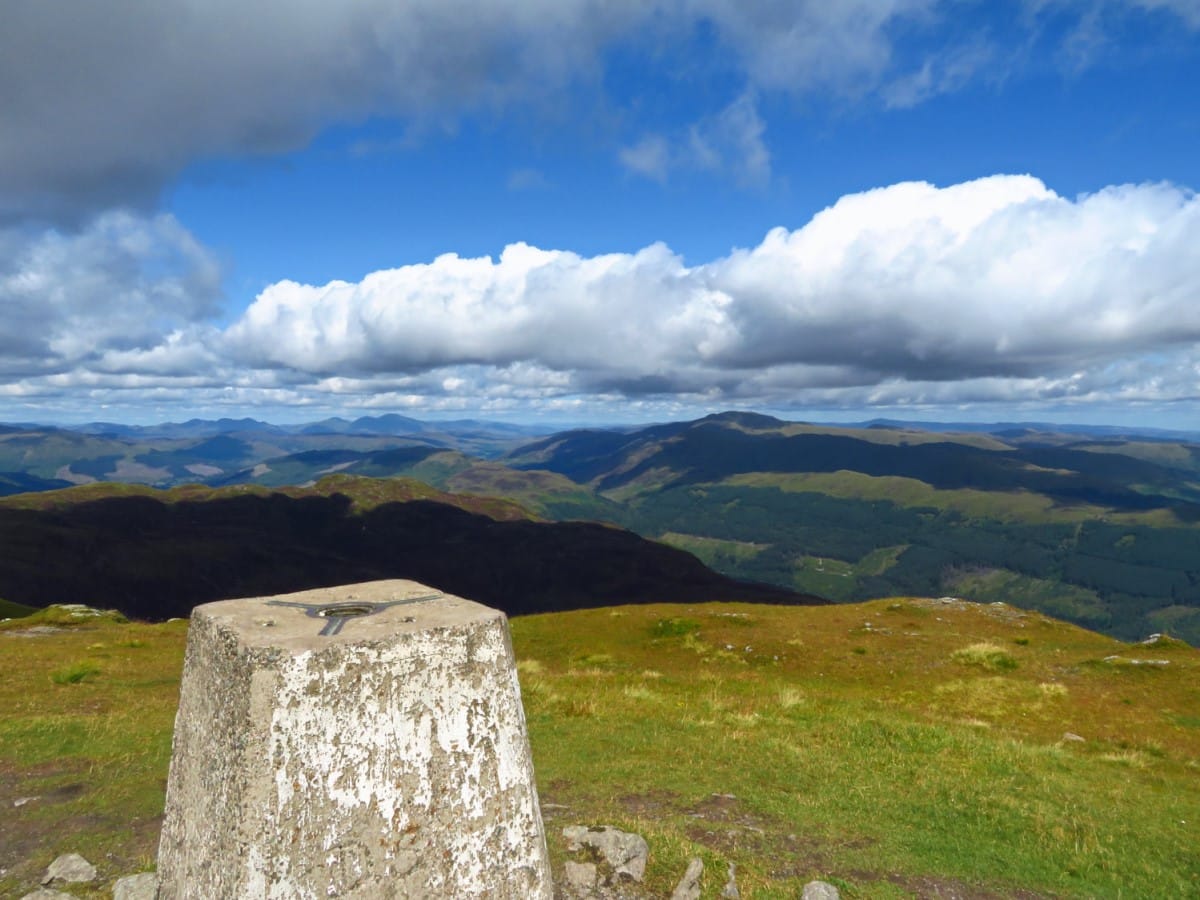
Out About Scotland Complete Guide to Ben Ledi
Ben Ledi only scrapes its way into this list as it’s located right on the border of the Highlands, four miles north of the Highland gateway village of Callander.
Ben Ledi is a 2,880-foot mountain (so a Corbett, not a Munro) overlooking Loch Lubnaig in the Trossachs National Park. At the foot of Ben Ledi is a popular cycle path that runs between Callander and Loch Earn, while pine forests border the mountain to the north and south.
Coupled with the water sports on offer at Loch Lubnaig, it’s no wonder that thousands of adventure-seeking holidaymakers choose to base themselves around Ben Ledi, in addition to the countless day-trippers looking to climb one of Scotland’s easiest mountain peaks.
The path that winds its way up Ben Ledi’s slopes is wide and remarkably flat, and it’s easy enough for all ages to walk up. It’s not a particularly long mountain walk at around five-six hours return, but it’s very, very scenic, and there’s every chance you’ll extend those hours to seven or more with all the pit stops you’ll need to soak up the views.
Once at the summit, there’s a small cairn to pop the obligatory rock on, after which you can trundle back down to enjoy a cuppa in the café on the other side of Loch Lubnaig.
There’s also a log cabin park at the base of the mountain where you can book a stay in a cabin with an outdoor hot tub, which is ideal if you’re looking for a long weekend to climb nearby Ben Vorlich or walk along the footpath next to Loch Katrine.
St. Conan’s Kirk
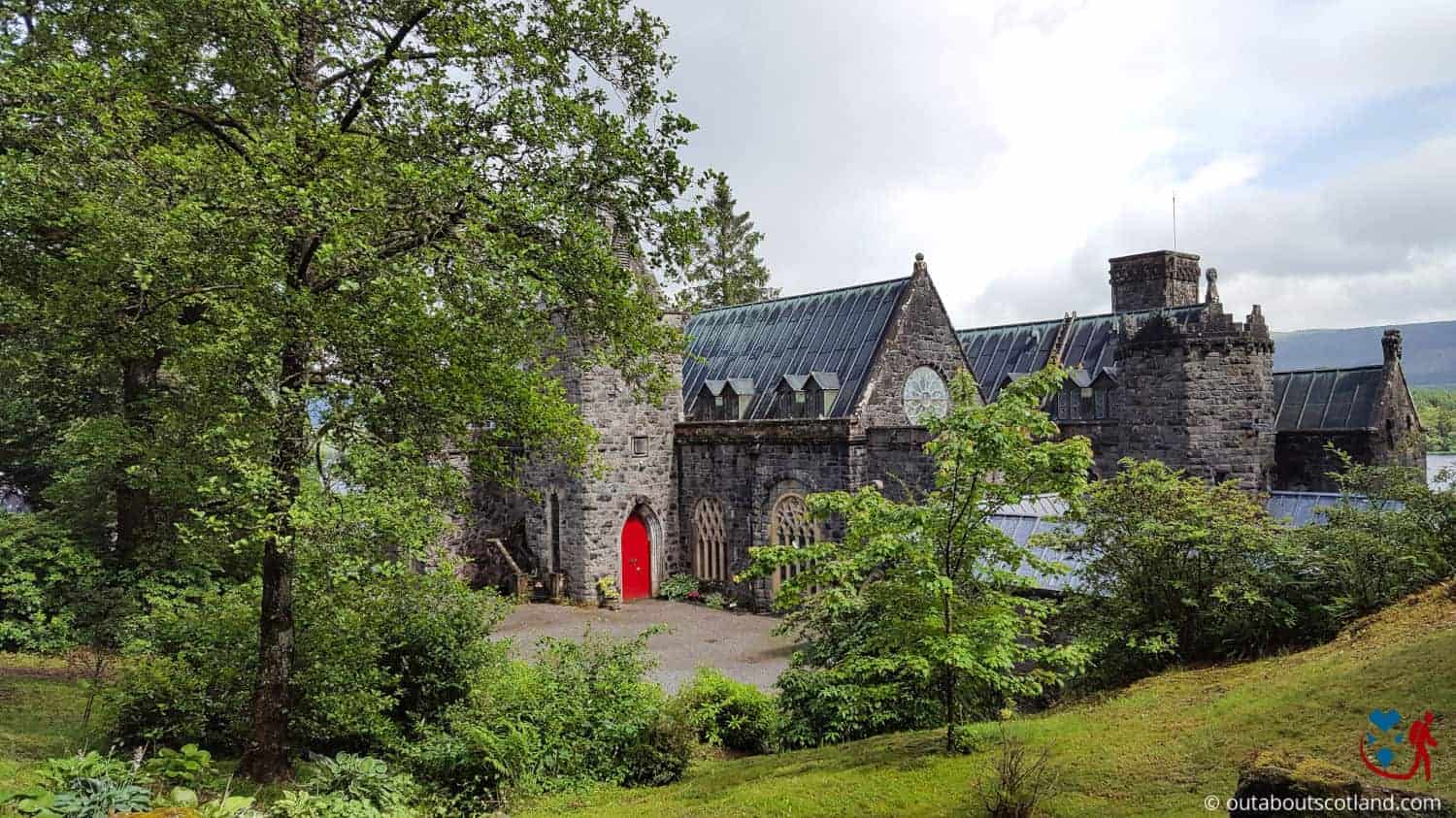
Out About Scotland Complete Guide to St. Conan’s Kirk
St. Conan’s Kirk isn’t the biggest historic building in Scotland, but it’s certainly one of the most atmospheric. Although it looks ancient, it’s actually ‘only’ 135 years old. Walter Campbell constructed it in 1886 for his ailing mother, and after her passing, he continued to add intricate carvings, bringing it up to par with the well-known Rosslyn Chapel near Edinburgh.
St. Conan’s Kirk isn’t quite as ornate as Rosslyn Chapel, but it’s definitely set in a nicer location, with Loch Awe just a short walk away and the glens of Lochy, Orchy, and Strae clearly visible in the distance. There’s no fee to visit the kirk, but donations are welcome, and it’s worth leaving a couple of quid just to see the stained-glass windows at the far end, which flood the interior with multi-coloured lights.
Unusually for a historic attraction like this, you’re allowed to take as many photos as you like inside, so if you do decide to stop while driving past it on the A85, don’t forget to bring your camera.
I wouldn’t plan much more than half an hour to explore St. Conan’s Kirk, but there are a few other places to visit if you’d like to include it in a day of sightseeing in this part of Scotland. The best of these attractions include Kilchurn Castle (mentioned above), Ben Cruachan Mountain, the Hollow Mountain visitor centre, and Loch Awe.
If you’d like to save money, check out The Best Free Attractions in the Scottish Highlands.
Top Attractions in the Scottish Highlands for Couples
| Loch Ness | Biden Nam Bian | Culloden Battlefield |
| Ben Nevis | St. Conan’s Kirk | Highland Wildlife park |
| Urquhart Castle | Ben Ledi | Highland Folk Museum |
| Dunrobin Castle | Kilchurn Castle | Buachaille Etive Mor |
| Glenfinnan | Fort George | Clava Cairns |
| Cawdor Castle | Dunstaffnage Castle | Eilean Donan Castle |
| Glen Coe | Braemar | Loch Morlich |
Frequently Asked Questions
Where are the Scottish Highlands?
The Scottish Highlands are a large region of Scotland that stretches from the Trossachs National Park in the south all the way to the farthest point of Britain’s mainland, Caithness.
The Highlands comprise the landmass to the north and west of the Highland Boundary Fault, which is a fault line that separates the region from the Lowlands.
What are the Scottish Highlands?
The Scottish Highlands are a vast expanse of mostly uninhabited mountainous land in the northwest of Scotland.
The Highland Boundary Fault’s movement and the glaciers’ carving of the lochs into the earth during the last ice age are what made the area famous for its mountain ranges.
When is the best time to visit the Scottish Highlands?
The best time to visit the Scottish Highlands is between May and September, when the days are long and the temperature is moderate. During these months, the daily average temperatures sit in the range of 15 °C (59 °F) to 17 °C (63 °F). Outside these months, the weather is more likely to be wet, and the temperatures plummet towards 0 °C, depending on the elevation.
How can I travel around the Scottish Highlands?
Travelling around the Highlands is best done by car, as there are infrequent bus services and train lines only connect the larger towns.
Travel to the north and west coast islands is usually by ferry, but it is also possible to travel by aircraft to the larger islands.


